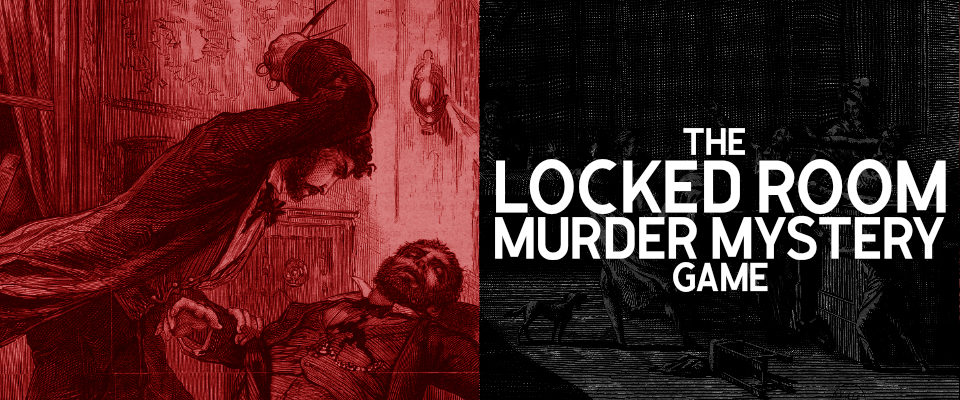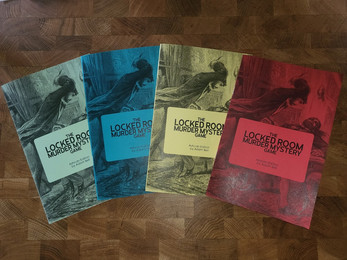
The Locked Room Murder Mystery Game
A downloadable game
Get a physical copy at https://adamebell.games
The Locked Room Murder Mystery Game is a tabletop storytelling game for one or more players inspired by Golden Age murder mystery detective novels.
Create a cast of characters gathered in one place. Fill their lives with tension and secrets.
Join our great detective as they solve the mysterious murder of one of our characters found in a locked room.
Play out the investigation until the true culprit is determined, and reveal the truth hidden among the clues and suspects in the detective’s journal.
This game is fully GMless and requires no prep to play. As you play, you'll come up with the characters and details and how they interact, and the game mechanics will determine who dies and who is culpable when the time is right.
| Status | Released |
| Category | Physical game |
| Rating | Rated 5.0 out of 5 stars (10 total ratings) |
| Author | adamebell |
| Tags | columbo, Detective, GM-Less, murder-mystery, storygame, Tabletop role-playing game, whodunnit |
Purchase
In order to download this game you must purchase it at or above the minimum price of $8 USD. You will get access to the following files:
Free Copies
Support this game at or above a special price point to receive something exclusive.
Free Copy
Take one if you need one, no questions asked. if you can, please rate the game or leave a comment to up it's visibility on itch!


Comments
Log in with itch.io to leave a comment.
so when you add clues, you don't have to strictly stick to the 5 by 5 grid so that even corners suspects can have more clues?
You can expand as far as you want. Most games you'll end up in the neighborhood of 5x5 so that's why the setup instructions ask you to leave at least that much space, but it's by no means a mandate.
ohhh, okay it makes sense having played, but it wasn't as clear in the text. I also missed the part about how "blank spaces" don't count for movement till I read the other comment on this page. So generally the "journal" shape is created only as you add things to it, and you just always have to alternate clue and suspect. I think I got it.
Little confused regarding some of the rules. For example, what do I do during the introduction phase if the killer lands on a blank suspect card? Add a new suspect? Some clarification on stuff like this would be great.
Hi, thanks for checking the game out!
If you're using notecards (as opposed to the worksheet), you'll only add notecards to the journal once you create the suspects, so you shouldn't have any blank ones in there for the killer to be bouncing around in.
If you're playing in worksheet mode (which is much less developed at this stage), I've done it both ways. Usually I will just pretend like the blank squares aren't real and keep the killer in the populated section of the journal. But there was one moment in a solo playtest where I used that situation as an opportunity to add new suspects and spice up my story.
Another question; when placing clues, is it important for the characters you want to interact to be within close proximity so the clue can connect them? I feel like that could lead to some confusion. Like, a clue about a conversation between suspects on opposite sides of the board would have little relevance to the suspects adjacent to either of the original suspects. But I suppose the fun comes from trying to decide how that conversation is related to the supposedly 'irrelevant' suspects.
Basically, each suspect has up to four clues that they can be connected to--specifically connected in a way that will lead to the murder being solved. When that connection is made, you put an answer token between the suspect & clue. You're not connecting suspect and suspect, so any number of other characters can show up and interact in these scenes.
Keep in mind that you get to choose how these answers are generated, so can set a scene with anyone in it as long as it leads to a convincing connection between the chosen suspect and clue. The suspect in question doesn't even need to be in the new scene! You touched on that with the last part of your comment; it can be a lot of fun to pull relevance out of what looks like obscurity.